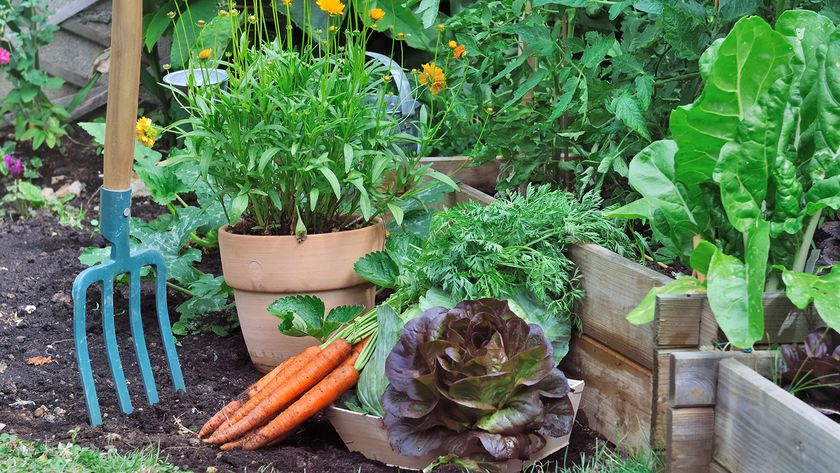7 ways to protect your yard from heavy rain
Look after your yard during the rainy season
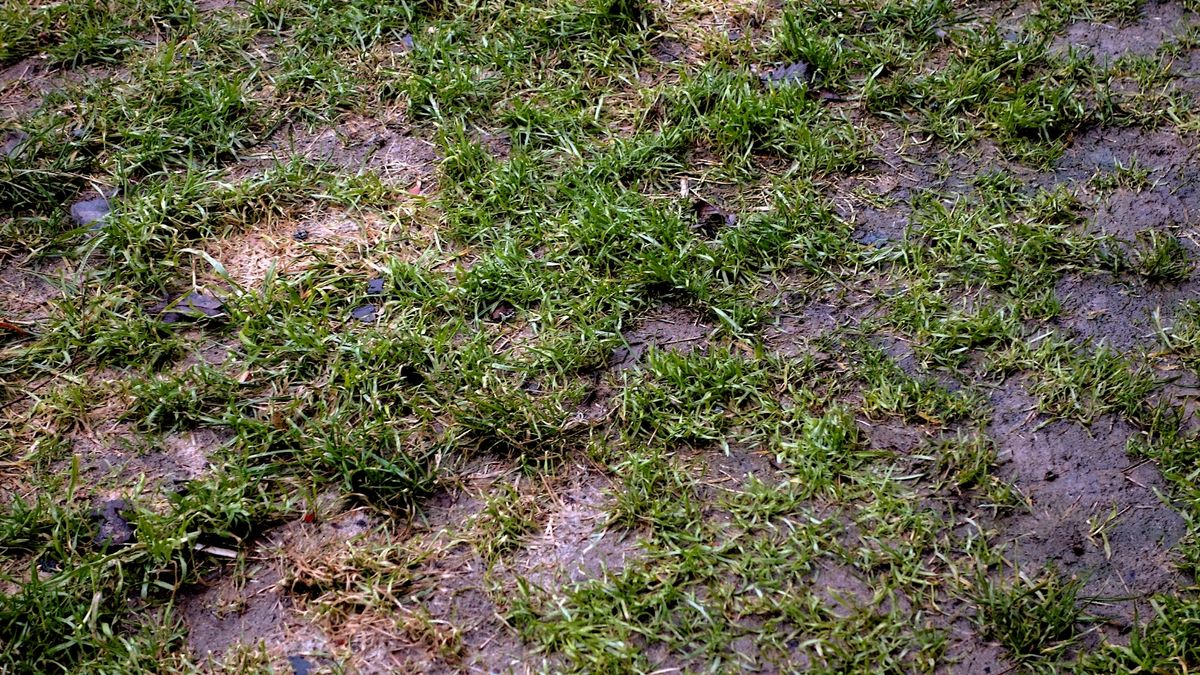
We all love a bit of rainfall in our yards. After all it makes our plants and lawns greener and contains essential nutrients that tap water just can’t deliver. But, when faced with a constant deluge of rain, your soil’s absorption capacity becomes overwhelmed, resulting in an unwanted muddy mess.
After investing time and money in creating a beautiful yard you can enjoy throughout the seasons, there’s nothing more disappointing than seeing waterlogged soil and surface flooding, to then discover your plants’ roots are saturated and your lawn resembles a swamp.
Instead of looking out at wilting plants and puddles of rain, you could be enjoying a vista of flood tolerant plants and a garden full of ways to collect and reuse rainwater.
Although there’s little you can do to control nature’s rainfall pattern, you can protect your garden from an onslaught of rain. Here, we delve into 7 ways to prevent heavy rainfall from damaging your yard.
1. Good drainage will help
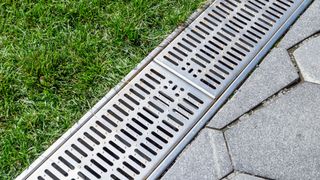
Your yard will flood when rainwater accumulates faster than it can drain away. It’s as simple as that. Although your yard may be able to cope with intermittent periods of heavy rainfall, more constant downpours will cause an issue, as there is no let up between the rain to allow water to drain away.
The severity of flooding and drain issues will depend on several factors specific to your location, such as the type of soil and the ratio of soil to landscaping in your garden.
It helps to understand why poorly drained soil is bad for your lawn and garden. Soil contains small pores that contain oxygen which plants love. However, if the soil is not well-drained, these pores fill up with water, causing issues with rot and disease.
Sign up to get the BEST of Tom's Guide direct to your inbox.
Get instant access to breaking news, the hottest reviews, great deals and helpful tips.
The U.K.'s Royal Horticultural Society (RHS) says that if your soil is slightly sticky and dense, it’s probably clay. Although clay retains water (a benefit in hot, dry climates), and is exceptionally fertile, it doesn’t drain well.
But what can you do to remedy the problem of poorly draining soil? The RHS suggests digging your soil in autumn and winter when it is still dry, as it becomes harder to work when wet. This will help to loosen and aerate the soil, allowing for better drainage. Digging in compost will also lighten the soil as it’s filled with those essential pores of oxygen.
Blocked drains and gutters can also cause flooding, as rainwater has nowhere to run off. Regularly cleaning your drains and gutters and removing leaves and debris will ease the problem.
If you are particularly plagued with heavy rainfall, it’s worth considering the soil ratio to landscaping in your garden. As the ratio of hard landscaping increases, so does the drainage problem, as there is less permeable ground for the rain to soak through. Make sure to build in sufficient stormwater drainage grills to reduce the level of flood water.
2. Capture rainfall with a rain chain
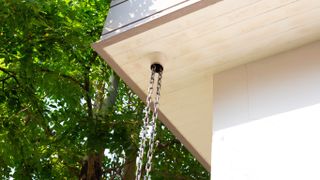
When it rains, why not conserve it? Rain chains are often used in drought areas to collect much-needed water, while also taking water away from where it's not needed, helping to channel and redistribute it to prevent lawn flooding.
Essentially, rain chains capture rainfall from your gutters and funnel it elsewhere, whether it’s to a water butt, for watering your garden in the drier months, or to another receptacle. They can also be attached to sheds, garages and outbuildings to make the most of the heavy rain.
As an extra bonus, rain chains add a decorative feature to your property.
3. Don’t mow or walk on the grass
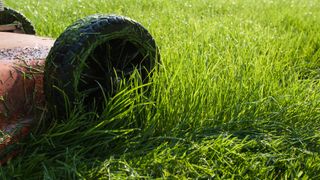
Mowing your grass when it’s water-logged is one of the 7 lawnmower mistakes to avoid if you want to maintain a perfect lawn. Flymo says mowing your lawn when wet can damage your lawn and prevent it from looking neat and tidy. Apart from resulting in an uneven cut, wet grass clippings can clog up your lawnmower, which get churned back out, leaving behind a trail of clumps. If left unraked, the clumps can smother and kill your lawn.
Your lawnmower also has to work harder. Unless you’re powering a push lawnmower yourself, there’s a risk it could overheat as it battles to cut through soggy grass. And take heed of the saying: water and electricity never mix. Be mindful of health and safety while using electric appliances in wet conditions.
Apart from leaving your grass to dry out before cutting it, you should also avoid walking on it. Too much pressure will compact the soil, making it harder for the water to drain away. Spiking your lawn with a garden fork will help to aerate the soil and enable rainwater to drain away more easily.
4. Stake your plants
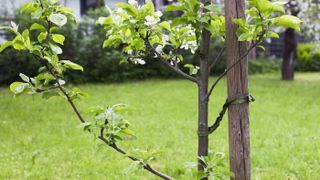
Wind and rain often go hand in hand and can cause havoc to your tall and delicate plants. The best solution is to plan ahead and get staking before the heavy rain gets underway.
There’s also another good reason to stake your plants. Heavy rain can cause your plants to droop — vital oxygen in the soil is replaced with water, and the plant can’t gain access to food. So, staking your plants will give them added support if they start to wilt.
Stakes should be pushed into the ground about 2-3 inches away from the stem of your plant, avoiding the root. With some added stability, your plants won’t rock and roll in the bad weather.
5. Don’t water your plants or lawn
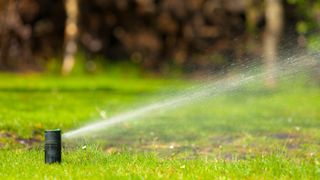
It may seem simple, but if there’s been plenty of rain, there’s no need for any additional watering! So, put away your sprinkler or watering can and let Mother Nature do what it does best.
While your plants and lawn love a drink most of the time, too much water will lead to flooding. A simple way to test whether your plants need anything extra is to test the soil. Dig down into your soil a few inches, and if it’s dry, it could do with a drink; if not, leave it alone.
Excessive watering can lead to rot or disease. If plants are left sitting in water-logged soil, root rot will start to develop, which can result in the plant dying.
While most plants remain dormant in the winter and need only a scant amount of additional watering, keep a check on new plants which are still establishing their root systems. But keep your watering to early in the day, when the temperature is warmer (at or above 40°F), as this will avoid the problem of water freezing and damage to the plant's roots.
6. Watch out for pests
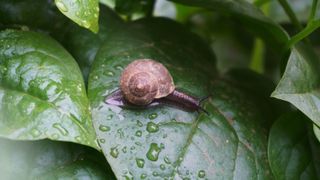
Although we shy away from the wet, many pests love damp conditions and will be putting up their party banners when the rain comes!
These creatures are heading straight for a juicy leaf, a moreish vegetable or a tasty flower. So, what can you do to limit the damage they cause? Growing plants vertically will hinder the success of non-flying pests, as they face an uphill battle to reach their goal. But where this isn’t practical, a sprinkling of egg or nut shells around the base of your plants will act as a deterrent, creating a prickly path for the pests to navigate. I’ve scattered pistachio shells around my Hostas to prevent snails from taking a munch, but I have to admit limited success.
The RHS suggests when buying new plants or seeds to check the labels, as some cultivars may be more resistant to pests than others. Another element to gardening sustainably is to consider your planting. Growing garlic, chives and leeks will keep aphids at bay, while a bay tree will repel flies, cockroaches and ants.
7. Give your garden a feed
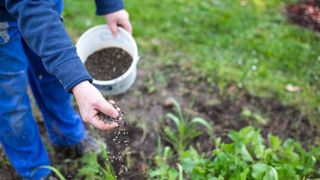
As mentioned above, your plants and lawn will lack essential nutrients during times of heavy rainfall, as these are leached out of the soil. So, what is the best way to feed your garden when the soil is already sodden?
It’s always worth waiting a while for your soil to dry out to allow any feed to work its magic. Clay soil will take longer to dry out than lighter sandy or loamy soil, so bear this in mind before getting out and applying any extra nutrients.
And while it’s tempting to wander around the garden as soon as the rain has stopped, it's best to avoid too much movement. Treading on a wet lawn or water-logged soil will further compact the ground. Once it starts to dry out it’s a good time to get fertilizing. Your fruit trees, shrubs and flowers that have been depleted during the rain, will thank you for the extra nutrients.
More from Tom's Guide

Camilla Sharman has worked in publishing and marketing for over 30 years and has covered a wide range of sectors within the business and consumer industries both as a feature, content, and freelance writer.
As a business journalist, Camilla has researched articles for many different sectors from the jewellery industry to finance and tech, charities, and the arts. Whatever she’s covered, she enjoys delving deep and learning the ins and out of different topics, then conveying her research within engaging content that informs the reader. In her spare time, when she’s not in her kitchen experimenting with a new recipe, you’ll find her keeping fit at the gym. In the pool, stretching at a yoga class, or on a spin bike, exercise is her escape time. She also loves the great outdoors and if she’s not pottering about in her garden, she’ll be jumping on her bike for a gentle cycle ride.
